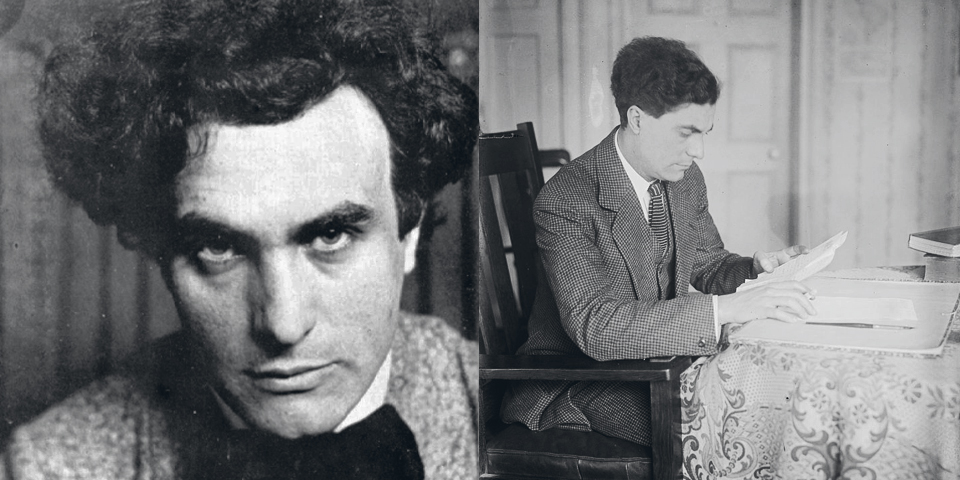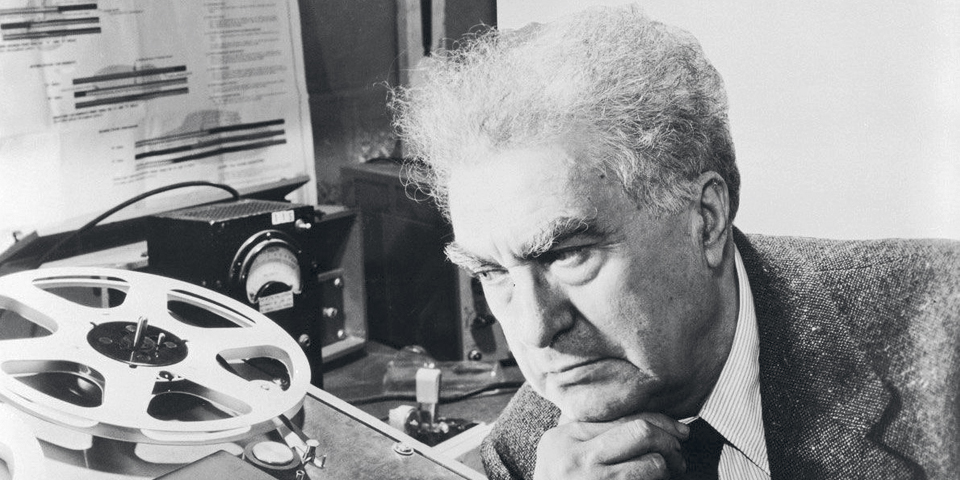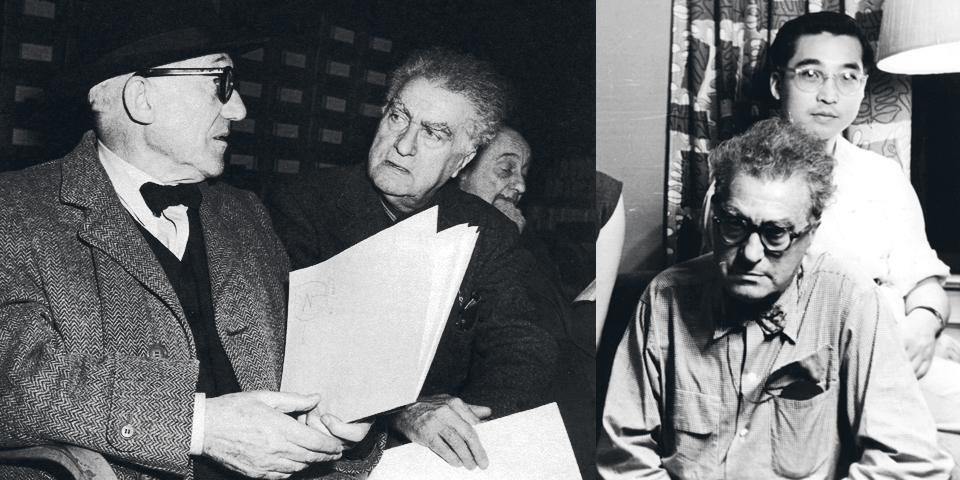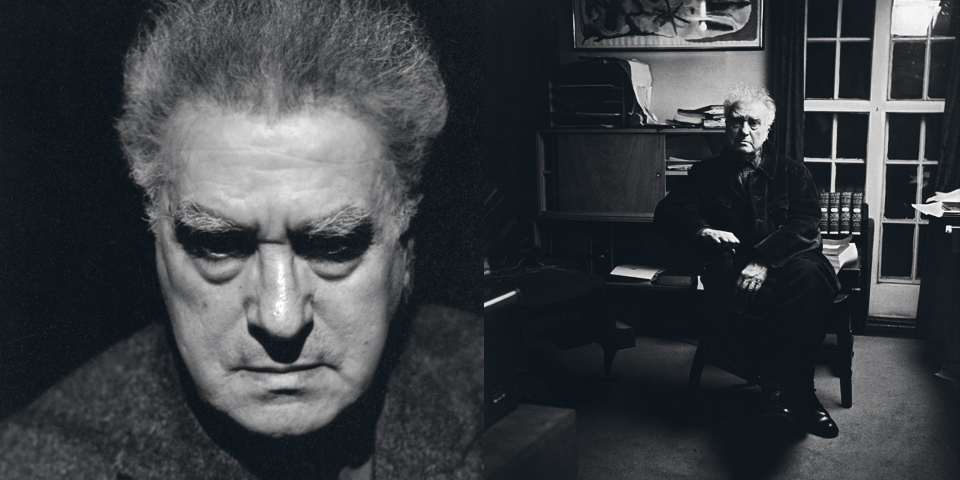IT’S ABOUT ART, MUSIC & LITERATURE
EDGARD VARÈSE
IN WAIT FOR THE FUTURE
His experiments anticipated electronic music and inspired artists from Morton Feldman to Chris Cunningham – but technology had to catch up first. As the Southbank Centre begins a tribute to Edgard Varèse, Gillian Moore explains why he was 50 years ahead of the curve.
“All those that people traverse or may traverse: physical deserts, on the earth, in the sea, in the sky, of sand, of snow, of interstellar spaces or of great cities, but also those of the human spirit, of that distant inner space no telescope can reach, where one is alone.”
Un Grand Sommeil Noir 1906 by Riccardo Chailly
Amériques 1921
Déserts 1954 by Kent Nagano
Nocturnal 1961 — Completed by Chou Wen–Chung
Frank Zappa’s Lost Interview
There is a story that the 15–year–old Frank Zappa, who had already tracked down the only Edgard Varèse LP in La Mesa, California, was allowed, as a 15th–birthday present, to put in a long–distance call to the 73–year–old composer. “I figured Mr Varèse lived in New York because the record was made in New York and [that] because he was so weird, he would live in Greenwich Village,” Zappa related. “I got New York Information, and sure enough, he was in the phone book.” A correspondence ensued, and Zappa’s devotion to Varèse’s music continued undimmed to the end of his life.
There is another story that Charlie Parker used to follow Varèse round the streets of Greenwich Village, trying to pluck up courage to ask him for composition lessons. Eventually, he found the nerve. “He stopped by my place a number of times,” said Varèse. “He’d come in and exclaim, Take me as you would a baby and teach me music. I only write one voice. I want to have a structure. I want to write orchestral scores.”
Varèse, who himself learned many things from jazz musicians, never got to teach the great man to write orchestral scores. He went to Paris to work on his piece Déserts, and Parker was dead from a heroin overdose by the time he returned to New York.French–born Varèse was trained in Paris and Berlin at the start of the 20th century. His early music, touched by Debussy, Strauss and Busoni, was destroyed in a Berlin warehouse fire in 1918. So it was with tabula rasa that the immigrant Varèse hit the artistic and technological hothouse of interwar New York, mixing with the likes of Man Ray and Marcel Duchamp, forming the International Composers’ Guild and even appearing as a bit–part actor in silent movies. The wonderful and strange music that Varèse created between his arrival in New York and his death in 1965 can be fitted on to only two CDs, or performed in three short concerts – which is exactly what will happen at Southbank Centre next weekend.
At the time of the Zappa and Parker encounters, the mid–1950s, Varèse was emerging from a long period of obscurity, depression and frustration about his inability to realise a new kind of music. Varèse had been dreaming of new sounds, of electronic music, a generation before it was technically possible. As early as 1916, he wrote: “We need new instruments very badly … Musicians should take up this question in deep earnest with the help of machinery specialists.” In the absence of “new instruments”, Varèse spent years creating a kind of proto–electronic music for live musicians, using percussion and conventional instruments to build great sound masses, unearthly harmonies and noise–based music that sounds for all the world like it could have been made in an electronic studio. The wailing sirens, the industrial percussion and scientific titles such as Integrales, Ionisation and Hyperprism speak of the machine age. Yet, I often get the feeling when I’m listening to Varèse that the music has existed since the beginning of time: sounds seem to call out across the universe, to be at once audaciously futuristic and unutterably ancient.
Technology didn’t catch up with Varèse until 1953. His long depression began to lift when he received an anonymous gift of an Ampex tape recorder and was able to assemble the electronic sounds that he had dreamed of. The result was the bleakly expressive Déserts, for orchestra and tape and the space–age bleeps and demented electronic choirs of Poème Électronique, commissioned by Le Corbusier as a sound installation for the Philips Pavilion at the Brussels World’s Fair in 1958.
My own first encounter with Varèse was in 1983, when I ran the London Sinfonietta’s first major project in London schools. This was around the time when composing became part of the curriculum. Children were being encouraged to invent their own music, not just recreate other people’s. While the inner–city teenagers rejected more conventional classical music, they felt the impact of Varèse’s sounds. Sirens, percussion and the idea of “organised sound” were irresistible ideas for kids trying to work out what it meant to compose their own music. After hearing Varèse’s austerely beautiful Integrales, one girl wrote: “It was all about sound. Even the trumpet sounded like a sound.” Her perceptive comment chimes with Morton Feldman’s remark to John Cage: “Varèse connects me to the direct impact of the sound, without letting it become a symbol.”
A few years later, at the Proms, I heard the National Youth Orchestra let rip in Amériques, Varèse’s noisy love poem to the limitless energy and promise of his adopted country: an urban Rite of Spring. The young musicians shook the foundations of the Albert Hall with the pounding, dancing and wailing of that most gigantic and poetic of orchestral pieces. This is music for young people. But the massive work that I heard then was actually the cut–down version of Amériques. In our Southbank Centre Varèse festival, 170 musicians will jam the Royal Festival Hall stage to form the biggest and loudest orchestra ever fielded by the NYO as they perform the original, 1922 version of Amériques, which long languished unperformed as it was thought too impractical.
Maybe it’s because he was 50 years ahead of his time that Varèse continues to be revered by all kinds of musicians today: Harrison Birtwistle wouldn’t have created his big blocks of sound without Varèse, and echoes can be heard in spectralist and electronic composers such as Gérard Grisey and Kaija Saariaho, while today’s laptop generation of musicians will pay homage to Varèse at this year’s Ether festival. Video artist and musician Chris Cunningham will perform set influenced by the composer, and DJ Scanner will create a new electronic score, using fragments of Varèse’s music, to the 1920 silent movie Dr Jekyll and Mr Hyde, in which the darkly handsome Varèse plays the part of a London bobby.
While I was writing this article, my Southbank Centre colleague, Ralph Rugoff, director of the Hayward Gallery, told me a priceless, first–hand Varèse story. As a child, Ralph lived in the same block as Varèse in Greenwich Village. “It was a night when the water mains burst open, and dozens of firemen came by to order everyone out of their houses, as they were afraid the street would buckle and the houses would collapse. Everyone rushed outside where the fire engines were throbbing away and a huge pump was pounding away as it tried to drain the flooding water.” Varèse stood amid the mayhem, marvelling in his bathrobe, rapturously declaring: “Listen to the rhythm of it all!”
The National Youth Orchestra perform works by Varèse on 16 April at the Sage, Gateshead, and on 18 April at the Royal Festival Hall, the final day of the Southbank Centre’s Varèse 360° festival. Details: southbankcentre.co.uk/varese. Gillian Moore is the Southbank Centre’s head of contemporary culture
“We have to take responsibility for every single note.”
[NYO players on playing Varèse]
James Wicks, 17, violin
“What I admire about Varèse is his persistence. He suffered so many hardships, at one point losing every work he had ever written, and yet he still managed to start again, writing such exciting music. He persevered even when audiences didn’t understand.”
Carys Evans, 17, horn
“After playing Amériques at the Proms in 2008, I realised [playing Varèse] is great training. When we perform him, we can’t take anything for granted: we have to take responsibility for every single note we play, and can’t assume anything because we might be the only person playing that note at that time.”
Elsa Bradley, 19, percussion
“Playing Amériques in the 2008 Proms was amazing. It was thrilling to play such extremes: at times, only the quietest of sounds was required, whereas earplugs were essential at others. The final blaring fff at the end of the piece, soaring above Antonio Pappano’s intense expression and outstretched hand will remain one of my most memorable NYO moments.”
Michael Buchanan, 16, trombone
“Varèse’s music has so many different timbres and soundworlds. I remember the novelty of listening to the Lion’s Roar [the Friction Drum, invented by Varèse for Ionisation] for the first time – amazing! Playing his music with an orchestra, especially one so large and energetic, really made me fall in love with it.”
Beth Cordall, 18, percussion
“Amériques is such a great piece for NYO to do, because we have the huge forces that make the piece so exciting; it’s amazing that at Easter it’s going to be even bigger. The amount of intensity is overwhelming with such huge forces, especially the parts that remind me of the sacrificial dance from The Rite of Spring, but are even more wild than Stravinsky.”















